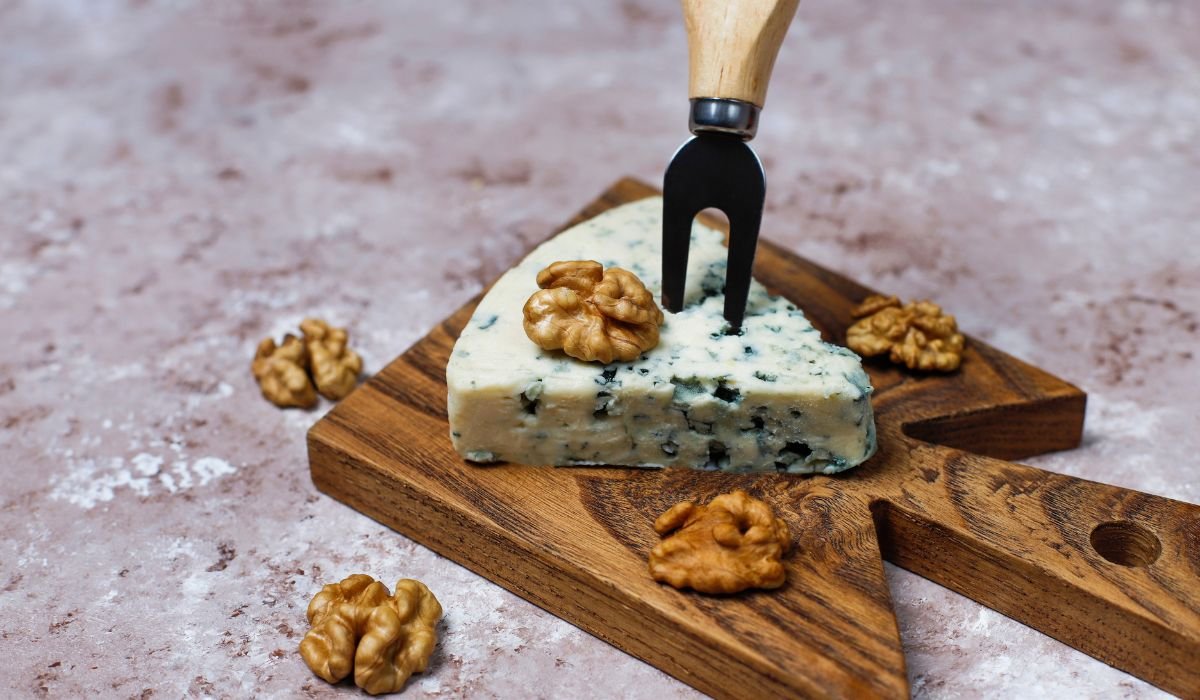Suppose this: You’re deep in the Swiss Alps. Crisp air, cowbells tinkling, maybe a yodel echoing faintly. Inside a cool, ancient stone cellar, wheels of cheese rest patiently. Among them? A rugged, earthy beauty with a name that sparks curiosity – Grouse cheese. Wait, grouse? Like the bird? Hold that thought! Let’s dive into this hidden gem of the cheese world.
What Exactly IS Grouse Cheese?
First things first: breathe easy, bird lovers! Grouse cheese doesn’t contain actual grouse. The name likely has murky origins – perhaps linked to the German word “Graukäse” (grey cheese) due to its natural rind, or maybe even a local dialect term. Its true essence lies elsewhere. Think of Grouse cheese as the rugged, less-famous cousin of Gruyère or Appenzeller, hailing from the Alpine regions of Switzerland and sometimes Austria or Germany.
It’s traditionally made from raw cow’s milk, often from cows grazing on high-altitude pastures bursting with wildflowers and herbs. This diet infuses the milk (and ultimately the cheese) with complex, nuanced flavors. It’s typically:
- Semi-hard to hard: Aged for several months, developing a firm but often slightly crumbly texture.
- Natural rind: Washed or brushed during aging, giving it a rustic, sometimes slightly sticky grey-brown appearance. This rind contributes significantly to its character.
- Full-flavored: Expect a punchy, savory profile. Think nutty (think toasted hazelnuts or almonds), earthy (like a damp forest floor in the best way), sometimes slightly sweet, and often with a distinct tangy, barnyardy note that cheese geeks adore.
A Taste Born in the Mountains: The Story Behind Grouse
This isn’t factory cheese. Authentic Grouse cheese is steeped in tradition, often made in small village dairies (Dorfsennereien) or Alpine huts (Alpkäserei) during the summer months when cows are high in the mountains. The use of raw milk is crucial – it preserves the unique microbial terroir of the specific pastures. The cheesemaking process is patient and hands-on:
- Milking: Cows graze freely on diverse Alpine flora.
- Curdling: Raw milk is gently warmed and curdled using natural rennet.
- Cutting & Cooking: The curd is cut, stirred, and carefully heated.
- Pressing: The curds are packed into moulds and pressed to expel whey.
- Salting: The young cheese wheels are brined or dry-salted.
- Aging (Affinage): This is where the magic happens! Wheels are aged in humid cellars for 4 months to over a year. They are regularly turned and washed/brushed with a saltwater solution (sometimes including cultures or even a touch of wine or cider), encouraging the growth of specific bacteria and molds on the rind that develop its complex flavor and aroma.
So, What Does Grouse Cheese Taste Like? (The Fun Part!)
Unwrap a piece, and you’ll likely get an immediate whiff – earthy, pungent, maybe a bit farmyardy, but in an incredibly appealing way for adventurous palates. Take a bite:
- Texture: Firm, sometimes slightly granular or crystalline near the rind, becoming smoother towards the center. Can be crumbly.
- Flavor Profile: It’s a symphony! Starts with a rich, savory umami punch. Then comes the nuttiness (think browned butter and toasted nuts), followed by earthy, mushroomy notes. There’s often a pleasant underlying sweetness and a distinct tangy, lactic sharpness that lingers. The rind intensifies the earthy, sometimes slightly bitter complexity. It’s bold, complex, and utterly satisfying.
Grouse vs. The Alpine Giants: How Does It Compare?
You might know Gruyère or Comté. Where does Grouse fit in? Here’s a quick cheat sheet:
| Feature | Grouse Cheese | Gruyère (AOP) | Comté (AOP) |
| Origin | Swiss Alps (Specific regions), sometimes Austria/Germany | Switzerland (Fribourg, Vaud, etc.) | France (Jura Massif) |
| Milk | Usually Raw Cow’s | Raw Cow’s | Raw Cow’s |
| Texture | Semi-hard to Hard, can be crumbly | Firm, Dense, Slightly Grainy | Firm, Smooth, Supple |
| Rind | Natural, Washed/Brushed, Grey-Brown | Natural, Brushed, Brown | Natural, Brushed, Brown |
| Flavor | Boldest: Earthy, Barnyard, Nutty, Tangy, Sharp | Nutty (Hazelnut), Fruity, Complex, Slight Sweetness | Nutty, Buttery, Caramel, Fruity, Complex |
| Aging | 4+ months | 5 months to 18+ months | 4 months to 24+ months |
| Intensity | ★★★★☆ (High) | ★★★☆☆ (Medium-High) | ★★★☆☆ (Medium-High) |
Read also: The Ultimate Guide to Mannacote (Manicotti): Your Homemade Italian Comfort Food Dream
How to Enjoy Grouse Cheese Like a Pro
This isn’t just a sandwich filler (though it would make an epic one!). To truly appreciate Grouse:
- Temperature is Key: Serve it at room temperature! Take it out of the fridge at least 30-60 minutes before eating. Cold mutes all those amazing flavors.
- Cutting: Use a sharp knife. Include some of the rind for the full experience – it’s edible and packed with flavor. Slice it thinly or cut into small chunks.
- The Perfect Plate: Serve simply on a wooden board.
- Pairings: Robust rye bread or crusty baguette. Tart apple slices or pear. Pickled onions or cornichons for a sharp contrast. Walnuts or hazelnuts. A dollop of fig jam or quince paste adds lovely sweetness.
- Wine & Beer: Pair it with wines that can stand up to its power: Swiss Chasselas (Fendant), Grüner Veltliner, Riesling (especially dry or off-dry), Pinot Noir, or even a bold Syrah. Beer lovers, try it with malty Amber Ales, Bocks, or Trappist ales.
- Cooking: It melts beautifully! Use it in fondue (a traditional Swiss use!), gratins, savory tarts, or stirred into a rich potato soup. Grate it over roasted vegetables or pasta. Its bold flavor shines through.
Finding This Alpine Treasure
Grouse cheese isn’t always easy to find outside its homeland, but it’s becoming more sought after. Here’s where to look:
- Specialty Cheese Shops: Your best bet! Look for shops with a strong selection of European or Alpine cheeses. Ask the cheesemonger – they love sharing hidden gems!
- High-End Grocers: Stores like Whole Foods Market, Wegmans, or regional specialty markets with good cheese counters might carry it occasionally.
- Online Cheese Retailers: Several reputable online cheese shops specialize in hard-to-find European cheeses (e.g., Murray’s Cheese, igourmet, Formaticum). Search for “Grouse cheese” or “Graukäse.”
- Travel: If you’re hiking in the Swiss Alps, stop at a local village dairy (Dorfsennerei) or Alpine hut (look for “Alpkäse” signs). Buying direct is magical!
5 Quick Grouse Cheese Takeaways
- Not Bird-Based: Despite the name, it’s pure cow’s milk cheese.
- Alpine Heart: Born in Swiss mountain pastures and cellars.
- Bold & Complex: Expect earthy, nutty, tangy, savory flavors with a rustic rind.
- Room Temp Rule: Serve warm to unlock its full flavor symphony.
- Seek Specialty: Find it at good cheese shops or online retailers.
Grouse cheese is an adventure for your palate. It’s a taste of Alpine tradition, terroir, and the skill of small-scale cheesemakers. It might challenge you at first sniff, but give it a chance at room temperature, and you might just discover your new favorite bold cheese. It’s the antidote to blandness!
Have you ever tried Grouse cheese? What was your experience? Or, what’s the most adventurous cheese you’ve fallen in love with? Share your cheesy tales in the comments below!
FAQs
- Is Grouse cheese really made from grouse?
- Absolutely not! It’s made entirely from cow’s milk. The name’s origin is unclear but unrelated to the bird.
- What does Grouse cheese taste like?
- It’s bold and complex: think savory, nutty (hazelnut/almond), earthy/mushroomy, tangy, and slightly sharp, often with a distinct barnyard note (in a good way!).
- Can I eat the rind on Grouse cheese?
- Yes! The natural, washed rind is edible and contributes significantly to the cheese’s characteristic earthy, complex flavor. It’s part of the authentic experience.
- Is Grouse cheese vegetarian?
- Often, no. Traditional Grouse cheese uses animal rennet (an enzyme from calves’ stomachs) to coagulate the milk. Always check the label if you require vegetarian rennet.
- How should I store Grouse cheese?
- Wrap it tightly in wax paper or cheese paper, then loosely in plastic wrap or place it in a resealable container in the warmest part of your fridge (usually the vegetable drawer). Bring it to room temperature before serving.
- What’s a good substitute for Grouse cheese?
- Look for other bold, Alpine-style washed-rind cheeses: Aged Gruyère, Challerhocker, Appenzeller Extra, or even a well-aged Comté. Tête de Moine also offers complexity.
- Why is it sometimes hard to find?
- Authentic Grouse is often produced in small quantities by traditional dairies in specific Alpine regions, limiting widespread distribution. It’s a specialty product.
You may also like: Flow Pouches: Your Pocket-Sized Secret to Natural Energy That Actually Lasts











